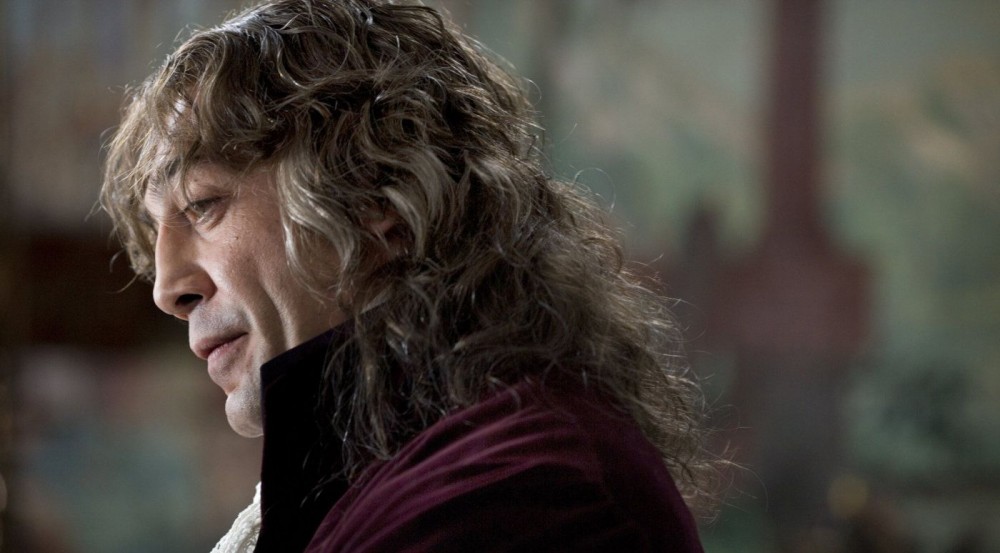GOYA’S GHOSTS
Monday, September 19
6:00
Spain, 2006
Directed by Miloš Forman
Starring Natalie Portman, Javier Bardem, Stellan Skarsgård
Approx. 117 min. 35mm print courtesy Academy Film Archive.
“Remarkable for bringing together for the third time two gifted film-makers --Miloš Forman and Jean-Claude Carriere – both in their mid-seventies, both of them interested in nonconformists and people with a complex relationship with authority. …GOYA’S GHOSTS begins superbly in 1792 at a meeting of the Inquisition in Madrid to discuss Goya's series of surreal, brutally satirical etchings Los Caprichos, about death, vice, witches and the abuses of the church. The Grand Inquisitor (Bunuel regular Michael Lonsdale) and most of the clerics are nonplussed and uncertain of their role in seemingly more liberal times. The imposing Brother Lorenzo (Javier Bardem), a friend and patron of Goya, is the only one to understand the brilliance and power of the artist's work. For this reason, he sees the popularity of the etchings as a reason to increase, not slacken, the Inquisition's activities. Ines (Natalie Portman), the beautiful, lively daughter of a rich merchant, is picked up by the Inquisition and under unspeakable torture makes an absurd confession to practising Jewish rites…Using Goya, a close family friend, as a go-between, her father invites Lorenzo to dinner. After the priest claims that nothing would induce him to make a false confession, he's compelled by force to sign a declaration that he's the son of a gorilla and a chimpanzee. This leads to Lorenzo's disgrace and flight, but does nothing for the incarcerated Ines….Engaging, thoughtful, beautifully mounted, with suitably painterly camera-work by Javier Aguirresarobe. No one should leave this film until the lights come up.”– Philip French, The Guardian
Reviews
"GOYA'S GHOSTS is like the sketchbook Goya might have made with a camera."
– Roger Ebert
"Much of the depth of the film comes from the sound design of Leslie Shatz; we hear precision in the ways vast church doors open and close, we hear far-off bells and echoing interiors, and the sound of shoulders being dislocated is understated but persuasive. And the cinematography of Javier Aguirresarobe is, well, painterly; look at the compositions, the colors, and especially the shading."
– Roger Ebert

.jpeg)
